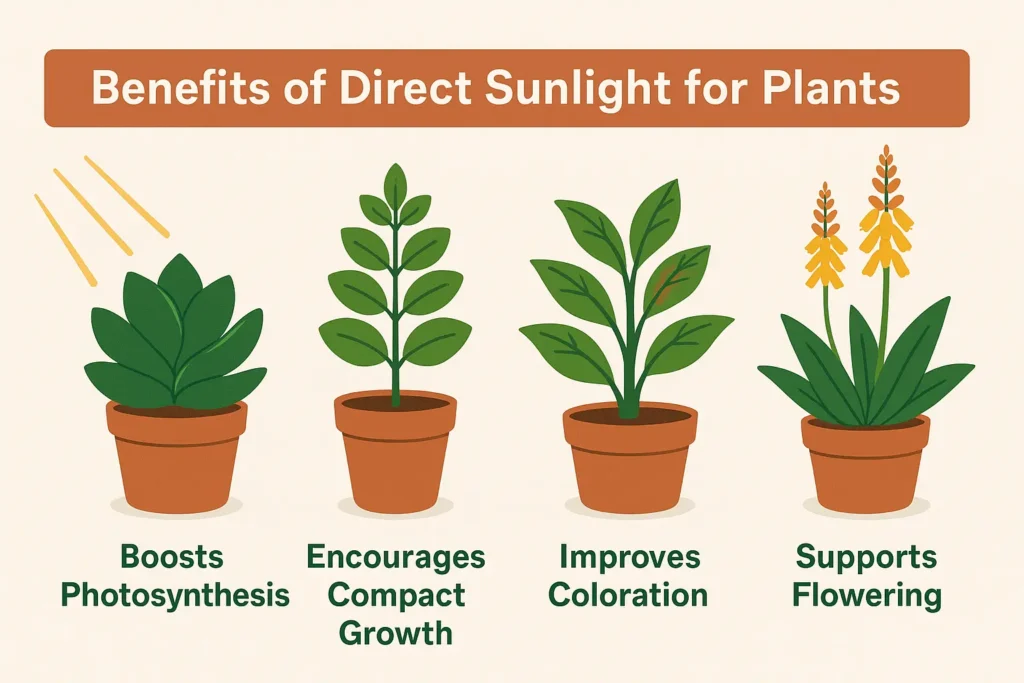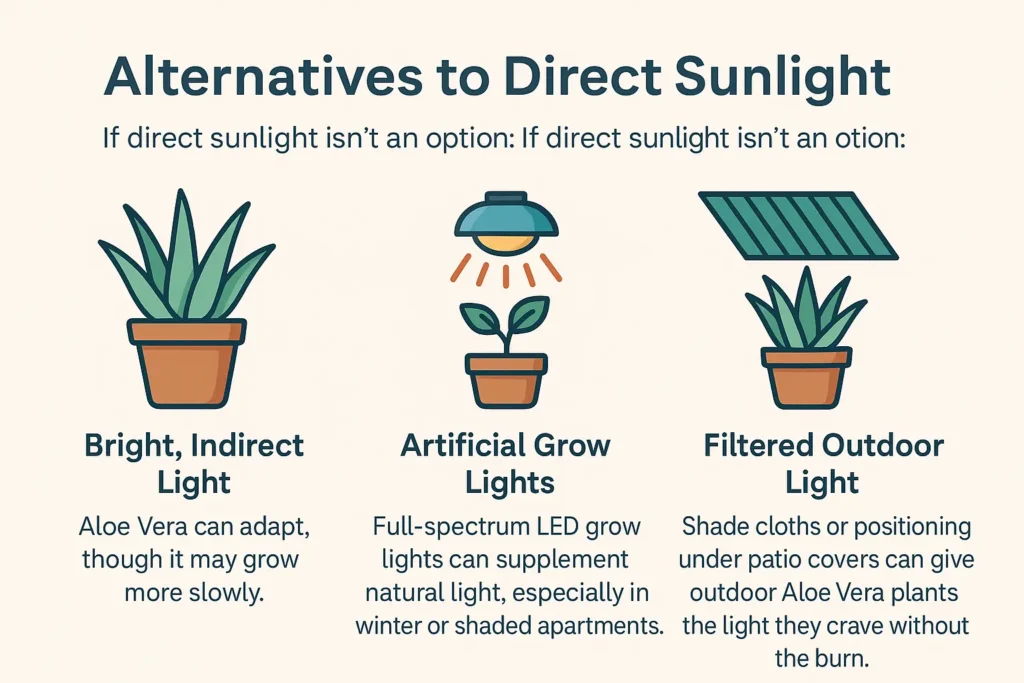Should Tropical Plants Be in Direct Sunlight?

Should tropical plants be in direct sunlight? Most tropical plants prefer bright, indirect light rather than harsh, direct sunlight. While many come from sun-drenched regions, their natural habitats are often shaded by dense tree canopies. Prolonged direct sunlight can lead to scorched leaves, stress, and dehydration, but some species enjoy a few hours of soft morning sun. The key is understanding each plant’s specific needs and mimicking its native environment.
For a curated list of plants that can tolerate more sun, check out our plants for direct sunlight guide.
Introduction
Tropical plants are a favorite for indoor gardens, patios, and even office spaces. Their lush foliage, exotic appearance, and sometimes fragrant flowers bring a slice of the rainforest into our homes. But the question remains: should tropical plants be in direct sunlight?
Understanding their light requirements is not just a matter of aesthetics. It’s essential for keeping them healthy and thriving. Place a tropical plant in the wrong light, and you’ll quickly notice the consequences—wilting leaves, brown tips, and stunted growth.
In this guide, we’ll break down whether tropical plants benefit from direct sunlight, when it’s appropriate, and how to provide the best lighting conditions for these jungle beauties.
Understanding Tropical Plants’ Natural Habitat
Before we decide if tropical plants should be in direct sunlight, it’s important to understand where they come from. Tropical plants originate from regions near the equator—think rainforests of South America, Southeast Asia, and Central Africa.
However, most tropical plants don’t grow in wide-open spaces. They’re typically found under the protective cover of towering trees, thriving in dappled sunlight or bright but filtered light. The thick forest canopy blocks the harshest rays, allowing only scattered sunlight to reach the plants below.
This natural adaptation explains why many tropical plants suffer when exposed to strong, direct sun for extended periods.rowing environment.
Benefits of Direct Sunlight for Tropical Plants
While the general rule is that tropical plants prefer indirect light, there are exceptions. Some species can benefit from moderate direct sunlight, especially early in the morning when the sun is less intense. So, should tropical plants be in direct sunlight? Absolutely — and here’s why:
Examples of Tropical Plants That Can Tolerate Some Direct Sunlight:
- Bird of Paradise (Strelitzia reginae): Known for its bold, banana-like leaves and exotic flowers, this plant can handle several hours of direct morning sunlight.
- Croton (Codiaeum variegatum): Famous for its vibrant, variegated leaves, crotons actually require bright light to maintain their color and can tolerate filtered direct sun.
- Fiddle Leaf Fig (Ficus lyrata): This popular houseplant thrives in bright spaces and can benefit from short periods of direct sunlight.
For these plants, controlled exposure to sunlight can boost photosynthesis, enhance leaf color vibrancy, and encourage robust growth. However, they still need protection during peak afternoon hours.
Risks of Excessive Direct Sunlight for Tropical Plants
Despite a few sun-loving exceptions, most tropical plants suffer under intense direct sun. Here’s what can go wrong:
- Leaf Scorching: Brown, crispy edges and pale spots on leaves signal sunburn.
- Excessive Water Loss: Direct sun accelerates evaporation, leading to dehydration.
- Heat Stress: Prolonged sun exposure can cause wilting and even halt plant growth.
- Color Fading: Variegated and deep green leaves can lose their rich colors.
If you’re wondering, “should tropical plants be in direct sunlight?”, the answer depends on the species, but erring on the side of caution is wise. Filtered or indirect light mimics their natural shade and protects against these issues.uring peak summer, basil appreciates some relief from the scorching afternoon sun..
Recommended Light Conditions for Tropical Plants
So, what’s the sweet spot for lighting?
- Bright, Indirect Light: Most tropical plants thrive with bright but diffused sunlight. A spot near an east- or north-facing window is ideal.
- Morning Sunlight: If direct sun is unavoidable, limit it to early morning hours when the light is gentle.
- Filtered Direct Sunlight: Use sheer curtains, blinds, or position plants behind taller furniture to filter harsh rays.
Indoor gardeners should also rotate plants occasionally to ensure even light distribution and avoid leggy growth.
For those specifically looking for plants that can handle more sun, visit our plants for direct sunlight guide.
Alternatives to Direct Sunlight
If your home lacks the perfect lighting conditions, don’t worry. There are several ways to provide tropical plants with suitable light without exposing them to harmful direct rays:
Strategic Placement: Positioning plants a few feet away from sunny windows or using light-colored walls to reflect brightness can create optimal conditions.at.
Sheer Curtains & Shade Cloths: These diffuse harsh light while still allowing brightness.
Grow Lights: Full-spectrum LED grow lights can supplement natural light, especially in winter.
Seasonal and Location-Based Adjustments
Light conditions change with the seasons. A spot that’s perfect in winter might become a sun trap in summer.
- Summer: Be vigilant about moving plants away from windows or adding extra layers of shade.
- Winter: You might need to bring plants closer to light sources or supplement with grow lights due to reduced daylight hours.
Outdoor placement also varies by region. In cooler climates, tropical plants can enjoy filtered outdoor sunlight during warmer months but should be shielded from harsh midday rays.s seasons change.
Practical Tips to Manage Light Exposure
Managing sunlight exposure doesn’t require fancy tools. Simple methods include:
- Hand Shadow Test: Place your hand between the light source and the plant. A soft, blurry shadow indicates indirect light; a crisp shadow means direct sun.
- Monitor Leaf Health: Watch for signs of sunburn or legginess as indicators of improper lighting.
- Rotate Regularly: Ensures even growth and avoids one-sided stretching towards the light.
Proactive observation helps answer the ongoing question: should tropical plants be in direct sunlight right now?ght? These practical approaches help maintain the delicate balance tropical plants need.
Conclusion
So, should tropical plants be in direct sunlight? For most, the answer is no. Tropical plants generally thrive in bright, indirect light, replicating the dappled sunlight of their native rainforests. Some species, like the Bird of Paradise and Croton, can handle a bit more sun, but even they require careful placement and monitoring.
The takeaway? Understand your specific plant’s needs, adjust for your environment, and always observe how your plant responds. A little sunlight goes a long way—but too much can be a recipe for trouble.
Check out our plants for direct sunlight guide. It’s packed with practical tips for sun-loving plants beyond basil.
Explore More Guides and Calculators
At PlantCalculators, we’re all about making plant care easier. Dive into our other handy guides and tools:
- Mulch Calculator: Find out how much light your specific plant needs.
- Watering Calculator: Personalized watering guides based on your environment.
- Soil Calculator: Get the dirt on soil mixes and feeding routines.
Visit our Houseplants section for a full library of resources designed to help your plants thrive.
Recommended Resource for Further Reading
For expert-backed, science-based houseplant care tips, we highly recommend this comprehensive guide from the University of Illinois Extension. It’s a fantastic resource for learning about indoor plant care, common issues, and best practices.


